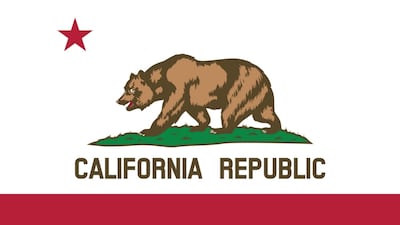
Policy & Regulation
Fragrance companies and suppliers can draft contracts that ensure the cost burden of tariffs is shared, says attorney David Morrell of law firm Jones Day, during a recent panel discussion, ‘Tariffs in Motion: Insight for the Fragrance Industry.”
Firms in the US facing tariff costs should identify US-based, non-tariff sources and lobby local government officials and DC when foreign-sourced ingredients cannot be substituted in the US.
By guiding regulators through case studies and mock dossier examples of how to utilize new approach methodologies, the International Collaboration on Cosmetics Safety hopes to counter hesitations in replacing animal tests.
The US Food and Drug Administration has released a roadmap to adopt new approach methodologies in lieu of animal testing for monoclonal antibody therapies and other drugs, which may include OTC drugs though the proposal does not specifically include cosmetics.
Dyes and colors which FDA says industries agree should no longer be used aren’t unsafe and are currently used only with the agency’s approval, industry stakeholders say. Center for Science in the Public Interest says the dyes are used “in tens of thousands of foods and beverages that are commonly consumed here in the United States.”
Testing conducted by the US Food and Drug Administration has found several cosmetic products on the market that contain high levels of methylene chloride, a banned ingredient.
A federal judge in the Southern District of New York denied Estee Lauder’s motion to dismiss a securities fraud lawsuit filed by shareholders who said the company concealed its reliance on a gray market retail revenue stream, which ultimately caused sales and the stock price to plunge.
Engaging with EU member state legislators, stressing the impact of national EPR systems on the accessibility, availability, and affordability of medicines, reformulating products to reduce their financial contribution, and lobbying for expanding the scope of EPR schemes to include other polluting industries are all ways that the European consumer health industry can try and influence the way that the revised Urban Wastewater Treatment Directive is transposed into national legislation, law firm Mason Hayes & Curran explains.
France's food safety regulator ANSES is proposing a reproductive toxicity category 1B classification for CBD under the EU's CLP regulation, which would mean an effective ban on CBD in cosmetics and foods. However, French hemp industry association UIVEC hopes that new evidence coming out of a European Commission review will put the issue to bed before it gets that far.
Functions supporting the US Food and Drug Administration’s Office of Cosmetics and Colors have been impacted by the reduction-in-force.
Two nail care ingredients included in the European Commission’s Omnibus VII, which includes about two dozen ingredients overall, are banned in Europe in September.
Cosmetics Europe is working to obtain derogations for three fragrance and/or cosmetic substances that may be categorized as carcinogenic, mutagenic or reprotoxic, which could result in a ban of their use under the Cosmetic Products Regulation.
Speaking at a recent AESGP webinar, sustainability expert Onur Durmus called the the European Commission’s “Omnibus” proposals - designed to simplify ESG reporting rules and recently supported by EU Parliament - a “positive development” for the European consumer health industry.
The cosmetics industry in Europe, along with pharmaceuticals, has been directed to financially cover updates to European Union wastewater plants as part of an extended producer liability approach.
Fragrance Creators Association will push the Trump Administration to exclude from tariffs fragrance materials that cannot be produced or cultivated domestically, while both FCA and the Personal Care Products Council will continue to promote the economic benefits of their respective industries.
Single-use packaging producers subject to Oregon state’s Extended Producer Responsibility law that didn’t meet the 31 March deadline to report their packaging materials are given a grace period to report until 30 April, says Circular Action Alliance, the organization carrying out the EPR program.
Reclassifying ethanol as a carcinogenic, mutagenic, or reprotoxic substance - something the European Chemicals Agency seems likely to do in the near future - would be “tantamount to a de facto ban” with “fatal consequences” for medical care in Germany, says Pharma Deutschland in a joint paper with 13 other German healthcare industry associations.
Personal care companies selling in California that suspect they are subject to its listing of a common stabilizer and packaging material should collect Certificates of Analysis for all raw materials, pursue third-party formula testing and retain counsel.
Single-use packaging producers subject to California’s SB 54 recycling law, which implements a statewide EPR plan, should continue to prepare for its implementation, even as they enter a ‘prolonged period of uncertainty,’ says consultant Michael Washburn.
Data from the US Food and Drug Administration indicated that two hair dye ingredients are formulated in eye makeup and dermal application products, prompting a Cosmetic Ingredient Review panel to conclude one dye is unsafe for such uses and discouraging those uses in the other dye.



















